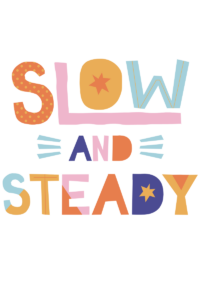“Culture Gap” = “Achievement Gap”
Culturally relevant teaching involves understanding a student’s culture. Research shows that it is an integral part of the learning process. I would argue that it is the most significant part.
We have endless discussions about how to deal with achievement gaps. The “culture gap” between students and their teachers contribute to “achievement gaps”. But we have very few conversations about that. Why is that?
Many of these conversations don’t happen because adults make statements like “Well, I don’t see color.” That in itself is an issue. You SHOULD see color. Check out the Color Blind Or Color Brave? Ted Talk.
Sometimes I think the people that make those statements make it so they get a societal gold star. A gold star that reads “I’m not racist because I’m color-blind”. Sorry my friends, that’s not how it works.
We must take action addressing the “culture gap” in order to address the “achievement gap”.
Culture And It’s Impact On Teaching
Culture is the way we make sense of the world. That is why it’s essential to include it in our teaching.
We want students to make sense of math. “The brain uses cultural information to turn everyday happenings into meaningful events.” (Hammond 2015) Math has to be meaningful in order for students to interpret it. Culturally Responsive Teaching Books
The Three Levels Of Culture
As an educator, make it a point to understand the three levels of culture. Reflect on how you are currently using it and what you could be work on. The three levels are surface culture, shallow culture, and deep culture.
This is observable such as a person’s or community’s food, clothes, music, holidays and etc. This has the lowest impact in your classrooms because it has little emotional impact on trust. Could you incorporate some of these things into your lessons? Sure. A county flag could be used as a fraction lesson. It’s just not as helpful for students to turn everyday experiences into meaningful events.

2. Shallow Culture
These are the unspoken rules of social norms that a person or community has. They include the attitudes towards elders, concepts of time, personal space, rules about eye contact and etc.
Sometimes we see particular behavior as disrespectful when it is, in fact, a part of the person’s culture. In my culture, we have minimal eye contact out of respect for the person speaking to us (especially an elder). I remember teachers making me look at them in the eyes when they were talking. I felt like I was in trouble. (I still see teachers making the same demand.) Here is where a teacher might see it as disrespectful and a student might see it as the teacher being mean. It wasn’t until I was older that I realized, that my own situation, was just two different social norms in conflict. Shallow culture has a high emotional impact on trust. A teacher that understands the students’ social norms can help them turn everyday experiences into meaningful events.

3. Deep Culture
This is the most important form of culture because it has an intense emotional impact on trust. It controls how we learn information. This form of culture manipulates our everyday behaviors and helps us make sense of our world. This would include decision-making, preference of competition or cooperation, gender roles, and etc. Knowing if a student prefers teamwork over individual competition is important when creating activities for the class.

Cultural Norms And Beliefs Matter
In my experience, most teachers would read this and say “I don’t have time to learn everyone’s background and culture. I have to teach”. I understand that. There are several different backgrounds in our classrooms which can be overwhelming. But there are patterns that we could look for in some cultures, universal patterns across cultures that can help. And I’m not talking about patterns of stereotypes. We can’t assume every student of Asian descent is going to be great in math.
Look at patterns such as the community. The way that students interpret the community is important. Did you know that in America, the dominant culture is “individualistic”? Meaning people prefer being independent and self-reliant. There is a strong focus on competition and self-promotion. However, Latino, African, Pacific Islander, and Native Americans have a more “communal” view. Meaning they make a group a priority over each individual in it.
Sociopolitical Issues And It’s Impact On Teaching
A culturally responsive teacher should be aware of the levels of culture. But they should also be aware of the sociopolitical issues affecting their students? Such as housing, transportation, education. Dr. Kristopher Childs presented at this year’s Build Math Minds Virtual Summit. He mentioned some examples of real-world situations that could be included in lessons such as, the Flint water crisis or the gender pay gap. Why not include these in our math lessons? Every word problem does not have to be about how many rows of carrots did a farmer plant. That is not relatable to a large population of students. I’m not saying that students should never be exposed to what a farmer is or does. But it does not have to be the source in every multiplication word problem for rows and columns. Remember, culture is how we make sense of the world. Test yourself For Hidden Bias
But I get it, the farmer word problems are in our textbooks and that’s what we are directed to teach. It’s clear our textbooks and curriculums are not culturally relevant since they are made for the masses. Let’s be honest the writers of such curriculums are primarily of the same background. That is why it’s important to modify our instruction to meet these needs for culturally relevant teaching. I should probably mention that by modifying I don’t mean slapping the name “Enrique” on a word problem. That does not make something culturally relevant.

Where Do We Start?
We first need to reflect on what is happening in your classroom. Where do you stand in culturally relevant teaching? Then start having these conversations with colleagues, leaders, admin, parents, etc.
The most important step we can take is to get past talking about it and get to work on it. There needs to be a commitment, not just a “one and done” professional learning session on how to make things more culturally relevant.
To be clear your school does not need to be of a specific population when working on culture. I have worked in some schools where the population was mostly white. That does not excuse you from doing this work because you do not have minorities in your classroom. Everyone needs to do the work!
Want to check out more?
MEMBERSHIP SITE:
https://zennedmath.com/online-courses/
FACEBOOK GROUP: Zenned Math Teachers
https://www.facebook.com/groups/zennedmathteachers/
YOUTUBE CHANNEL: Zenned Math
https://www.youtube.com/channel/UC5njH_5LoK6G67BvZecGfnw?
WANT ME IN YOUR INBOX? Sign up for my newsletter
https://view.flodesk.com/pages/5efc876dcaabca0028b95eb5
DISCLAIMER: Some links included in this blog might be affiliate links. If you purchase a product or service with the links that I provide, I may receive a small commission. There is no additional charge to you!

